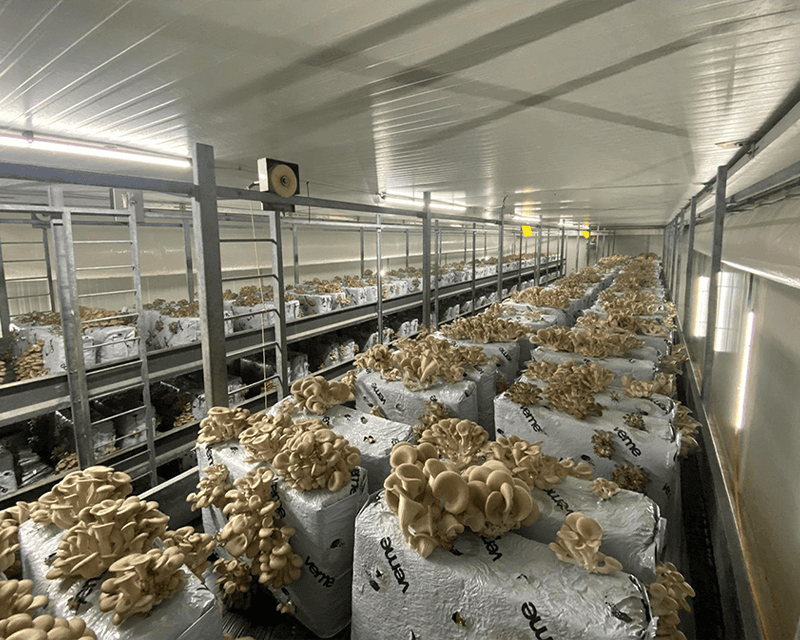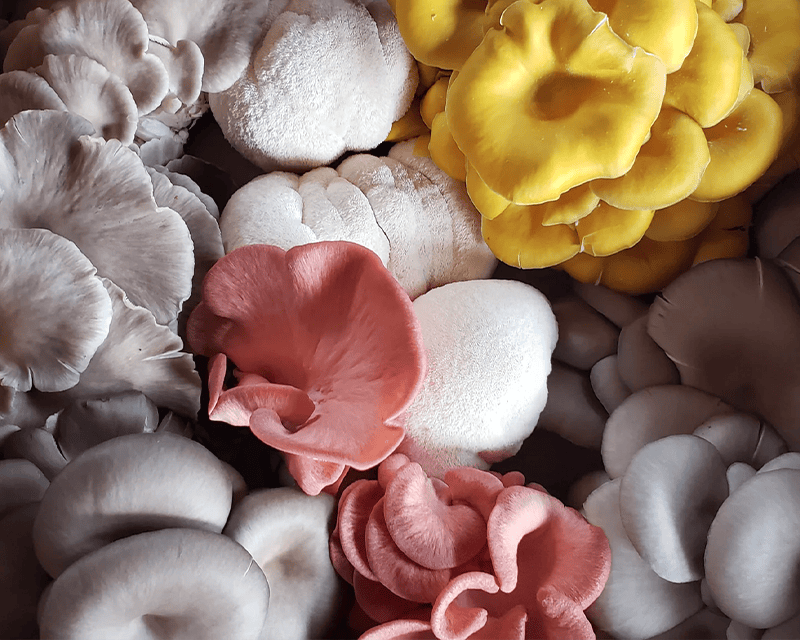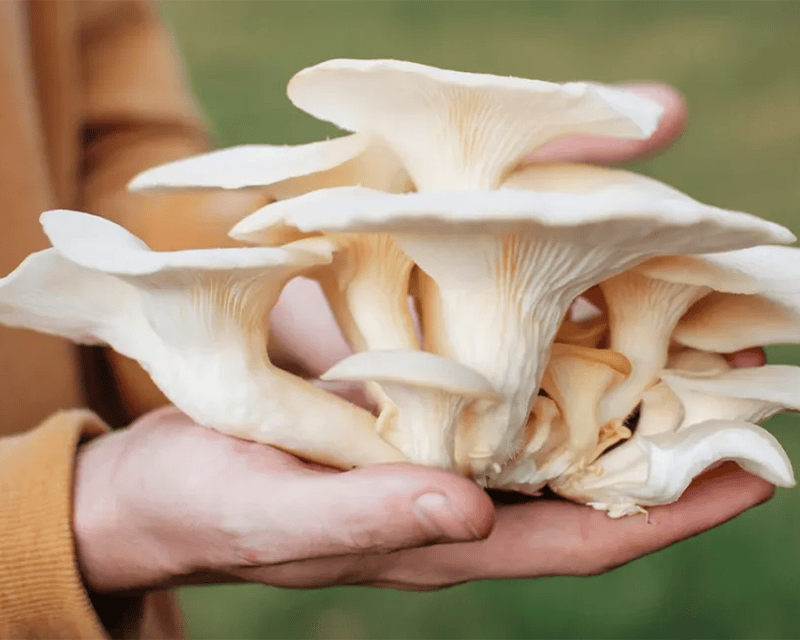The oyster mushroom, scientifically known as Pleurotus ostreatus, has a captivating origin story deeply rooted in ancient cultures. Believed to have originated in Germany during World War I, these mushrooms were cultivated on straw beds as a sustainable food source due to scarcity. Oyster mushrooms soon made their way to Asia, where they became a staple in Chinese, Japanese, and Korean cuisines, renowned for their delicate flavor and versatility in various dishes.
Over time, oyster mushrooms have diversified into multiple varieties, each with its own unique characteristics and cultivation preferences. From the classic pearl oyster mushroom to the exotic pink oyster mushroom, these fungi have captured the attention of both culinary enthusiasts and scientists alike. The adaptability and resilience of oyster mushrooms have made them a sought-after ingredient in recipes worldwide, cementing their status as a beloved culinary treasure with a rich and fascinating history.
Unique Physical Characteristics of Oyster Mushrooms:
- Oyster mushrooms, scientifically known as Pleurotus ostreatus, are recognized for their distinct appearance.
- These mushrooms feature a fan or oyster-shaped cap that grows in overlapping clusters.
- The caps can vary in color from white to shades of gray, brown, or even pink, with a velvety texture on the underside.
- Another notable physical characteristic of oyster mushrooms is their short stems, which are often off-centered or eccentric in position compared to the cap.
- Unlike traditional button mushrooms with a central stem, oyster mushrooms have an asymmetrical growth pattern that sets them apart visually.
- Additionally, oyster mushroom caps can grow to be quite large, sometimes reaching several inches in diameter, offering a substantial and meaty texture when cooked.
Nutritional Benefits of Oyster Mushrooms:
Oyster mushrooms are not only delicious but also packed with essential nutrients that contribute to a healthy diet. For starters, they are an excellent source of protein, making them a valuable option for vegetarians and vegans looking to meet their protein needs. In addition, oyster mushrooms contain significant amounts of fiber, which aids digestion and promotes gut health.
Furthermore, oyster mushrooms are rich in vitamins and minerals, including potassium, which plays a crucial role in regulating blood pressure and maintaining proper muscle function. They also provide a good amount of vitamin D, an essential nutrient for bone health and immune function. Incorporating oyster mushrooms into your meals can be a flavorful way to boost your nutrient intake and enhance your overall well-being.
Medicinal Uses of Oyster Mushrooms:
- Oyster mushrooms have been traditionally used in various cultures for their potential medicinal properties.
- These mushrooms contain bioactive compounds that are believed to have anti-inflammatory and antioxidant effects.
- In traditional Chinese medicine, oyster mushrooms have been utilized to support immune function and promote overall well-being.
- Research suggests that oyster mushrooms may possess antimicrobial properties, making them a potential natural remedy for combating certain types of bacteria and viruses.
- Additionally, some studies indicate that oyster mushrooms could help regulate blood sugar levels and cholesterol, which may be beneficial for individuals with diabetes or high cholesterol.
- Overall, the medicinal uses of oyster mushrooms continue to be an area of interest for researchers exploring the potential health benefits of these fungi.
Culinary Versatility of Oyster Mushrooms:
Oyster mushrooms, with their mild and slightly sweet flavor, are a versatile ingredient that can be incorporated into a wide range of dishes. Their delicate yet meaty texture makes them a popular choice for both vegetarian and meat-based recipes. Oyster mushrooms can be sautéed, grilled, roasted, or even added raw to salads for a unique touch.

These mushrooms pair well with a variety of herbs and spices, making them a versatile addition to soups, stir-fries, pasta dishes, and more. Their ability to absorb flavors while still retaining their own distinct taste makes them a favorite among chefs looking to add depth to their creations. From simple sautéed oyster mushrooms as a side dish to using them as a meat substitute in tacos or burgers, the culinary options with oyster mushrooms are truly endless.
Ecological Importance of Oyster Mushrooms:
Oyster mushrooms play a crucial role in the ecosystem by acting as decomposers, breaking down organic matter such as wood and plant debris. As saprotrophs, they help in nutrient cycling by converting complex organic compounds into simpler forms that can then be utilized by other organisms in the environment. This process contributes to maintaining soil fertility and overall ecosystem health.
Furthermore, oyster mushrooms have symbiotic relationships with certain tree species, forming mycorrhizal associations that benefit both parties. Through these associations, oyster mushrooms assist in enhancing the absorption of water and essential nutrients by the trees, while receiving carbohydrates in return. This mutualistic relationship is vital for the survival and growth of the participating plant species, highlighting the ecological significance of oyster mushrooms in fostering biodiversity and ecosystem stability.
Growing Conditions for Oyster Mushrooms:

Oyster mushrooms, scientifically known as Pleurotus ostreatus, are versatile fungi that can be grown in a variety of conditions. These mushrooms are known for their ability to thrive in relatively low temperatures compared to other mushroom species. They typically grow best in temperatures ranging from 55°F to 65°F (13°C to 18°C). However, they can still grow in slightly warmer temperatures, but their fruiting may be less prolific.
In addition to temperature, oyster mushrooms require a humid environment to flourish. The ideal humidity level for growing oyster mushrooms is around 85-90%. To achieve this, it's essential to maintain a moist growing medium and provide regular misting to keep the humidity levels consistent. Proper ventilation is also crucial to prevent the development of mold and ensure the mushrooms have enough fresh air for optimal growth.
Harvesting and Storing Oyster Mushrooms:
When it comes to harvesting oyster mushrooms, it is crucial to pick them at the right time. These mushrooms should be harvested when they are young and still firm, ideally before the caps start to flatten out. To harvest, gently twist the mushroom stem at the base to detach it from the substrate. Be sure to cut off any remaining substrate material before storing the mushrooms.
Storing oyster mushrooms is best done in a paper bag or a breathable container to allow air circulation and prevent moisture buildup. Avoid storing them in plastic bags as they can become soggy and spoil quickly. Oyster mushrooms should be kept in the refrigerator and used within a few days for optimal freshness. If you have a surplus, consider drying or freezing them for longer-term storage while preserving their flavor and nutritional benefits.
Health Risks Associated with Oyster Mushrooms:
As with any food, there are potential health risks associated with consuming oyster mushrooms. One main concern is the possibility of allergic reactions in some individuals. While rare, allergic responses to oyster mushrooms can range from mild symptoms like itching and hives to more severe reactions such as difficulty breathing or anaphylaxis. It is important for individuals with known mushroom allergies to exercise caution when trying oyster mushrooms for the first time.
Another health risk to be mindful of when it comes to oyster mushrooms is the potential for gastrointestinal upset. Some people may experience digestive issues like bloating, gas, or stomach cramps after consuming oyster mushrooms. This can be due to the high fiber content of the mushrooms or individual sensitivities to certain compounds present in the fungi. If you are trying oyster mushrooms for the first time, it's advisable to start with a small portion to gauge your body's reaction and to ensure you do not experience any adverse effects.
Popular Oyster Mushroom Varieties:
One of the most well-known varieties of oyster mushrooms is the Pearl Oyster. Characterized by its pale, ivory-colored caps that resemble delicate pearls, this variety is popular in culinary dishes for its mild flavor and velvety texture. Another widely cultivated oyster mushroom is the Blue Oyster, distinguished by its striking blue-gray hue and an aroma that is both sweet and earthy. Its unique appearance adds visual appeal to dishes, making it a favorite amongst chefs and food enthusiasts alike.



